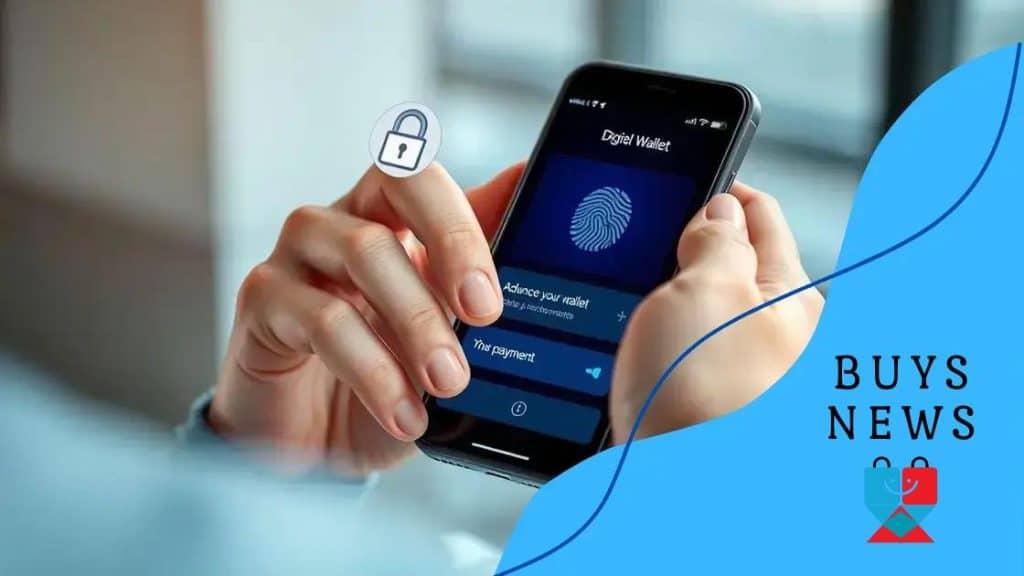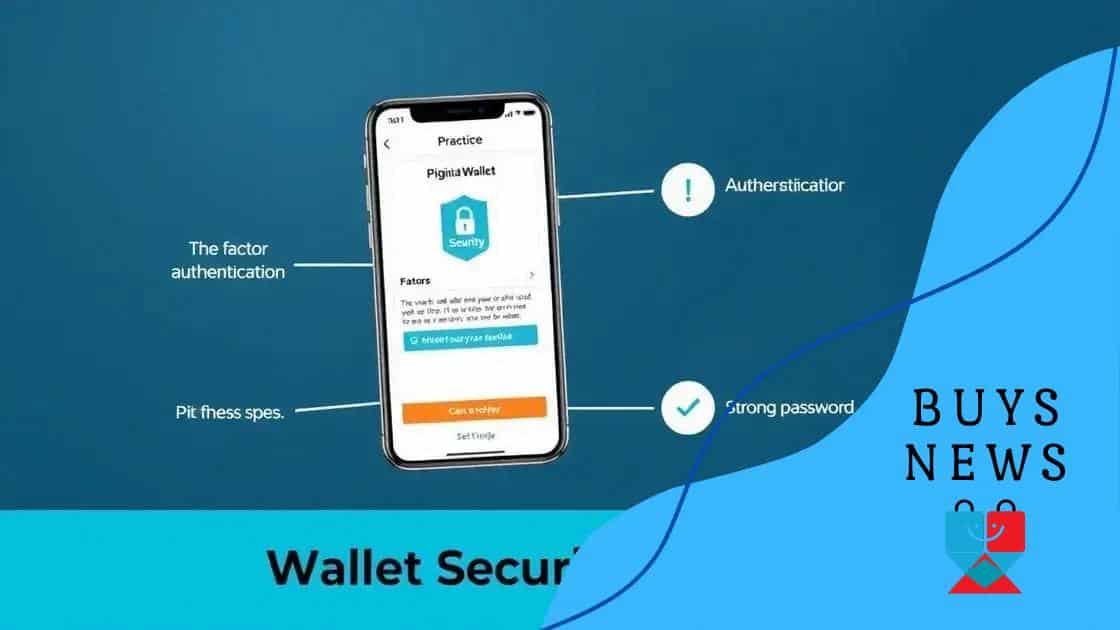Digital wallet security enhancements: boost your protection

Digital wallet security enhancements involve using strong passwords, two-factor authentication, encryption, and staying informed about emerging threats to protect your financial information during transactions.
Digital wallet security enhancements are crucial in today’s digital landscape. With the rise of online transactions, protecting your digital assets is more important than ever. Have you ever wondered how secure your financial information really is?
Understanding digital wallets and their security needs
Understanding digital wallets is essential to securing your financial transactions today. These virtual tools allow you to store and manage your payment information conveniently, but with that convenience comes the need for enhanced security measures.
Digital wallets are more than just convenient; they are also vulnerable to various threats. To protect your funds, it’s vital to recognize the different security needs associated with these wallets.
Key security features of digital wallets
When choosing a digital wallet, look for certain security features that can enhance your protection. Here are a few you should consider:
- Two-factor authentication: This adds an extra layer of security by requiring a second form of verification.
- Encryption: Strong encryption helps protect your information from unauthorized access.
- Device security: A secure device can help prevent malicious software from targeting your wallet.
- Transaction alerts: Notifications can help you monitor your account for unauthorized access.
Integrating these features can significantly improve your wallet’s security. Additionally, understanding how these wallets function helps you stay one step ahead of potential threats. Each digital wallet may have unique requirements based on its design and purpose.
Keep in mind that cybercriminals continuously evolve their tactics. Regularly updating your wallet and its security measures is crucial in staying protected. A proactive approach can reduce the risk of fraud and keep your financial data safe as new threats emerge.
Common security threats
While digital wallets offer convenience, they also present risks, such as phishing scams and malware attacks. It’s important to recognize these threats and take appropriate steps to safeguard your wallet.
Adopting a combination of good habits can ensure a secure digital wallet experience. For instance, always verify the authenticity of any links you click, and monitor your account statements regularly to catch any unusual activity.
Common threats to digital wallet security
Common threats to digital wallet security can undermine the safety of your financial transactions. Understanding these threats is essential for anyone using digital wallets.
Many users are unaware of the various risks associated with digital wallets. By bringing awareness to these threats, you can take steps to protect your information. Cybercriminals often look for easy targets, and unfortunately, many digital wallet users fall victim to these tactics.
Types of threats to watch out for
Here are some common threats targeting digital wallets:
- Phishing attacks: These involve fraudulent messages or emails that appear to be from legitimate sources to steal your login credentials.
- Malware: Malicious software can infect your device, capturing sensitive information, including your wallet details.
- Man-in-the-middle attacks: In these scenarios, attackers intercept communication between you and your wallet provider, potentially gaining access to your data.
- Public Wi-Fi vulnerabilities: Using public Wi-Fi can expose your wallet to hackers since these networks may not be secure.
Recognizing these threats is the first step in developing effective security measures. When you understand the dangers that exist, you can stay vigilant and protect your finances.
It’s also vital to maintain good security practices. For example, ensure that you only download wallet apps from trusted sources. Keeping your software updated can help patch vulnerabilities and defend against attacks. Enabling notifications for transactions can alert you to any suspicious activities as they happen.
Staying informed
Keeping current with the latest security news regarding digital wallets enables you to respond promptly to emerging threats. Regularly reviewing security tips can go a long way in ensuring your safety. Remember, a well-informed user is often the safest user.
Best practices for enhancing wallet security

To ensure your digital wallet is secure, implementing best practices for enhancing wallet security is crucial. Protecting your financial information should be a top priority.
Many users underestimate the importance of security measures. However, by following effective strategies, you can minimize the risk of fraud and unauthorized access. Let’s explore some of the best practices that can help safeguard your digital wallet.
Key security measures
Consider these key measures when it comes to securing your digital wallet:
- Enable two-factor authentication: This adds an extra layer of protection by requiring a second form of identification.
- Use strong, unique passwords: Avoid simple passwords. A mix of letters, numbers, and symbols will enhance security.
- Regularly update your software: Keeping your apps and device updated can protect you from vulnerabilities.
- Monitor transactions: Regularly checking your account can help you spot any unauthorized activities quickly.
Incorporating these practices will create a stronger defense against potential threats. Regularly reviewing your security settings is essential as technology and threats evolve.
It’s also important to be aware of phishing attempts. Always verify the source of emails or messages that ask for your personal information. When in doubt, go directly to the wallet app or site rather than clicking on links.
Educate yourself
Staying informed about the latest security trends and threats can empower you as a user. Knowledge is your best protection. Utilize credible security resources and articles to stay ahead of potential risks. Always be cautious when sharing your information online, and think critically about what information you provide.
The role of encryption in digital transactions
The role of encryption in digital transactions is vital for securing sensitive information. Encryption protects your data by converting it into a code that is unreadable without the correct key.
This technology is crucial because it helps prevent unauthorized access to your financial information. When you make a transaction using a digital wallet, encryption ensures that your personal details remain confidential and secure.
How encryption works
Encryption involves transforming readable data into a scrambled format. Only those with the correct decryption key can access the original information. This process is particularly important for financial transactions, as it protects against data breaches and identity theft.
- Symmetric encryption: Both the sender and receiver use the same key for encryption and decryption. This method is fast and efficient but requires secure key management.
- Asymmetric encryption: This uses a pair of keys—a public key for encryption and a private key for decryption. This enhances security, as the private key is never shared.
- Secure Socket Layer (SSL): This protocol encrypts data transferred between your device and the server, ensuring safe communication.
- Transport Layer Security (TLS): An updated version of SSL, TLS enhances encryption for secure transactions.
Using these encryption methods helps create a safer digital environment for users. It’s essential to choose a digital wallet that employs strong encryption standards.
In addition to protecting your data, encryption builds trust. When your wallet provider uses effective encryption, you can feel more confident that your information is secure. For users, this means a safer experience during online transactions.
Future of encryption in digital transactions
As technology evolves, so do methods to compromise it. This means that encryption will continue to adapt, becoming more sophisticated to counter emerging threats. Keeping up with advancements in encryption technology is essential for both providers and users to maintain security.
Future trends in digital wallet security
The future trends in digital wallet security are crucial for ensuring the safety of digital transactions. As technology advances, the ways we protect our information must evolve as well.
New threats continuously emerge, and keeping up with the latest trends is essential for users. Understanding these future trends helps you make informed decisions to safeguard your finances.
Emerging technologies
Several technologies are set to enhance the security of digital wallets:
- Biometric authentication: Using fingerprints or facial recognition adds a layer of protection, making it harder for unauthorized users to access your wallet.
- Artificial intelligence: AI can analyze user behavior, detecting unusual activities and flagging potential fraud before it occurs.
- Blockchain technology: This decentralized system provides increased security through its inherent transparency and tamper-proof nature.
- Tokenization: Replacing sensitive data with a unique identification symbol ensures that your actual data remains confidential during transactions.
As these technologies develop, they will shape how we think about digital security. The integration of these innovations will create a safer environment for all users.
In addition to breakthroughs in technology, regulations will also evolve. Governments worldwide are beginning to implement stricter regulations regarding data protection and privacy. These laws will require digital wallet providers to adopt enhanced security measures to comply with new standards.
User awareness and education
Increased awareness among users will play a vital role in the future of digital wallet security. Educating users about potential risks and how to counter them empowers them to take proactive measures. This knowledge will help users recognize suspicious activities and respond accordingly.
FAQ – Frequently Asked Questions About Digital Wallet Security
What are some best practices for securing my digital wallet?
To secure your digital wallet, use strong passwords, enable two-factor authentication, and monitor your transactions regularly.
How does encryption enhance the security of digital transactions?
Encryption protects sensitive data by converting it into a code that can only be accessed with the right key, ensuring confidentiality.
What is biometric authentication and how does it improve security?
Biometric authentication uses unique personal features like fingerprints or facial recognition to secure access to your wallet, making unauthorized access harder.
Why is user education important for digital wallet safety?
Educating users about potential threats, like phishing scams, empowers them to recognize and respond to suspicious activities effectively.





